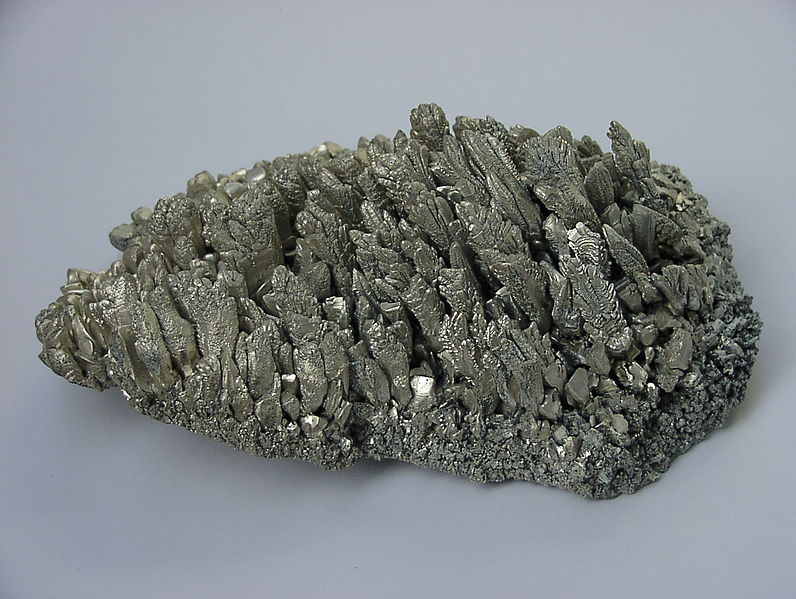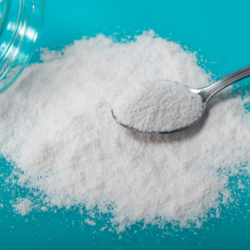Orotates, bioavailable mineral salts?
It was the researcher Hans Nieper who discovered the particular properties of orotates at the end of the 1980s. These mineral salts of orotic acid indeed allow optimal mineralization . Orotatesse are found naturally in animal and plant cells.
But how do orotates deposit minerals (magnesium, calcium, chromium, iron, lithium, zinc, etc.) at the heart of the cell, directly in the cell nucleus and the mitochondria?
A small definition of “salts” is necessary in order to better understand the properties of orotates.
In chemistry, a salt is the combination of two elements (ions). Table salt, for example, is the combination of a chlorine atom (Cl) and a sodium atom (Na). For orotates, it is the same thing, they are mineral salts, that is to say, the combination of orotic acid and minerals ( magnesium, calcium, chromium, iron, lithium, zinc ). In contrast, unlike most salts which dissociate quickly in water, an orotate is a stable salt. The mineral can thus be transported in the blood without being diluted there .
The example of magnesium orotate
Also, for a mineral element like magnesium present in a food supplement, to be assimilated by the body, it must be conveyed by another element (here orotic acid), to pass through the different cell membranes of our body. The objective is in fact to reach the cells which “consume” or store this mineral .
Magnesium, which plays a very important role in the ionic balance of the human body, must therefore be transported inside all the cells of our body.
When it comes into contact with the cell membrane, liposoluble magnesium orotate , ie miscible in “fats”, can easily cross the cell membrane (composed of fatty acid). This passive mechanism, of low intensity, is however multiplied by uracil transport, a natural intramembrane ionic balance mechanism.
Thus, magnesium penetrates in high quantity in the heart of the cells where it is released at the level of the sites which use them (the mitochondria for example).
The Orotates are used as vehicles for minerals in food supplements, in order to increase their bioavailability. Lithium orotate is the most commonly used salt in this way.
Dietetics and orotates
All the foods that we consume regularly, however, do not contain the same amount of orotates. Dairy products and whole grains, for example, are rich in orotates .
But our contemporary way of life, which favors diets less varied and more denatured than in the past, does not provide a sufficient dose of orotates to meet the needs of our body.
Taking minerals ( magnesium , calcium , chromium , iron , copper , potassium , lithium , zinc ) in the form of orotates makes it possible to complement each other effectively and easily.
To go further, here are the most recommended orotates .
Calcium orotate:
Traditionally used in these cases :
- Correction or prevention of osteoporosis (associated with cod liver oil )
- Helps in ossification during growth or recovery from fractures
- Inflammatory osteoarticular disorders (associated with chondroitin , glucosamine and MSM or Methyl Sulfonyl Methane )
- Muscle cramps
- Loss of calcium caused by taking birth control pills
- Menopause and breastfeeding
- Spasmolytic
- Eczema
- Psoriasis
Maximum indicative dose: 3.2 g / day
Essential recommendations: Calcium must in fact always be accompanied by magnesium, preferably in the form of orotate . On the one hand, magnesium facilitates the fixation of calcium on the bones, on the other hand, it prevents overdose of calcium in the muscles – in particular in the heart – which could cause hyperexcitability.
Chromium orotate:
Traditionally used in these cases :
- Type 2 diabetes
- Compulsion for sweet foods
- Pancreatic insufficiency
- Hypercholesterolemia
- Pregnancy
- Arteriosclerosis
- Arterial hypertension
Maximum indicative dose: 0.3 mg / day only!
Copper orotate:
Traditionally used in these cases :
- Stimulation of the immune system, particularly against bacterial and viral infections
- Facilitation of cellular respiration
- Antianemic and anti-inflammatory actions
- Participation in the regulation of the secretion of pituitary, thyroid and sexual hormones
Usual use: 1 dose per day for two to three weeks maximum
Use in case of infection: 1 dose twice a day for the duration of the infection
Maximum indicative dose: 10 mg / day
Essential recommendations: do not exceed three weeks of supplementation because copper is an ambivalent metal, that is to say it is antioxidant below a certain dose and oxidant beyond.
Iron orotate:
Traditionally used in anemia due to lack of iron: insufficient food intake (vegetarian and vegan diets), pregnancy, heavy periods.
Maximum indicative dose: 450 mg / day
Essential recommendations:
1: Iron intake can only be started after a blood test has demonstrated the lack of iron, because this metal – like copper and manganese – is ambivalent, it that is, it is anti-oxidant below a certain dose and oxidant beyond.
2: Iron intake should be discontinued in the event of an infectious episode because some viruses and bacteria would use it to multiply even faster.
Magnesium orotate:
Traditionally used in these cases :
- Insufficient food intake: this is one of the most frequent deficits encountered in Western populations following the upheaval of traditional food and the increasingly stressful lifestyle.
- Spasmophilia
- Acute or chronic stress
- Prevention of cardiac arrhythmias, especially in the event of a history of angina pectoris or myocardial infarction
- Optimization of energy production by the Krebs cycle
- Preventive action against the toxicity of excess intracellular calcium
- Loss of magnesium caused by taking birth control pills
Usual dose: 500 mg / day
Maximum indicative dose: 1.5 g / day
Essential recommendations:
1: Contraindicated in renal failure
2: If the dosage of 500 mg / day proves insufficient, consult a doctor in order to decide together on the merits of the possible increase in the dosage
Potassium orotate:
Traditionally used in these cases :
- Muscle cramps (in combination with calcium and magnesium orotates )
- Restoration of the acid-base balance
- Prevention of certain heart conditions
Usual use (apart from renal insufficiency): 1 taken every morning
Essential recommendations:
1: Contraindicated in renal insufficiency
2: In the event of treatment of hypertension, consult a doctor because certain drugs contraindicate potassium intake.
3: For doses greater than that recommended here, the advice of a doctor is essential
Zinc Orotate:
Traditionally used in these cases :
- Stimulation of the immune system
- Support of protein synthesis during pregnancy and growing periods of the child
- Stimulation of the healing process
- Stimulation of the regeneration of integuments (nails, brittle hair)
- Type 2 diabetes
- Male sexual fatigue
- Decreased fertility in both sexes
- Psoriasis
- Zinc loss caused by taking birth control pills
Maximum indicative dose: 120 mg / day.
Essential recommendations:
1: In order to be better absorbed, zinc requires the presence of vitamin B6 (1 mg / d).
2: In the event of declared cancer, zinc cannot be taken without medical advice.
All advice, indications and dosages are given only as an indication and can not replace the consultation of a doctor – naturopath.
Especially since the issuance of compounding of orotate chromium orotate iron, lithium orotate, of manganese orotate, calcium orotate, magnesium orotate, or orotate zinc is in fact subject to compulsory medical prescription in France.






Magnifique article!!
Merci pour votre retour positif, belle journée, Elodie